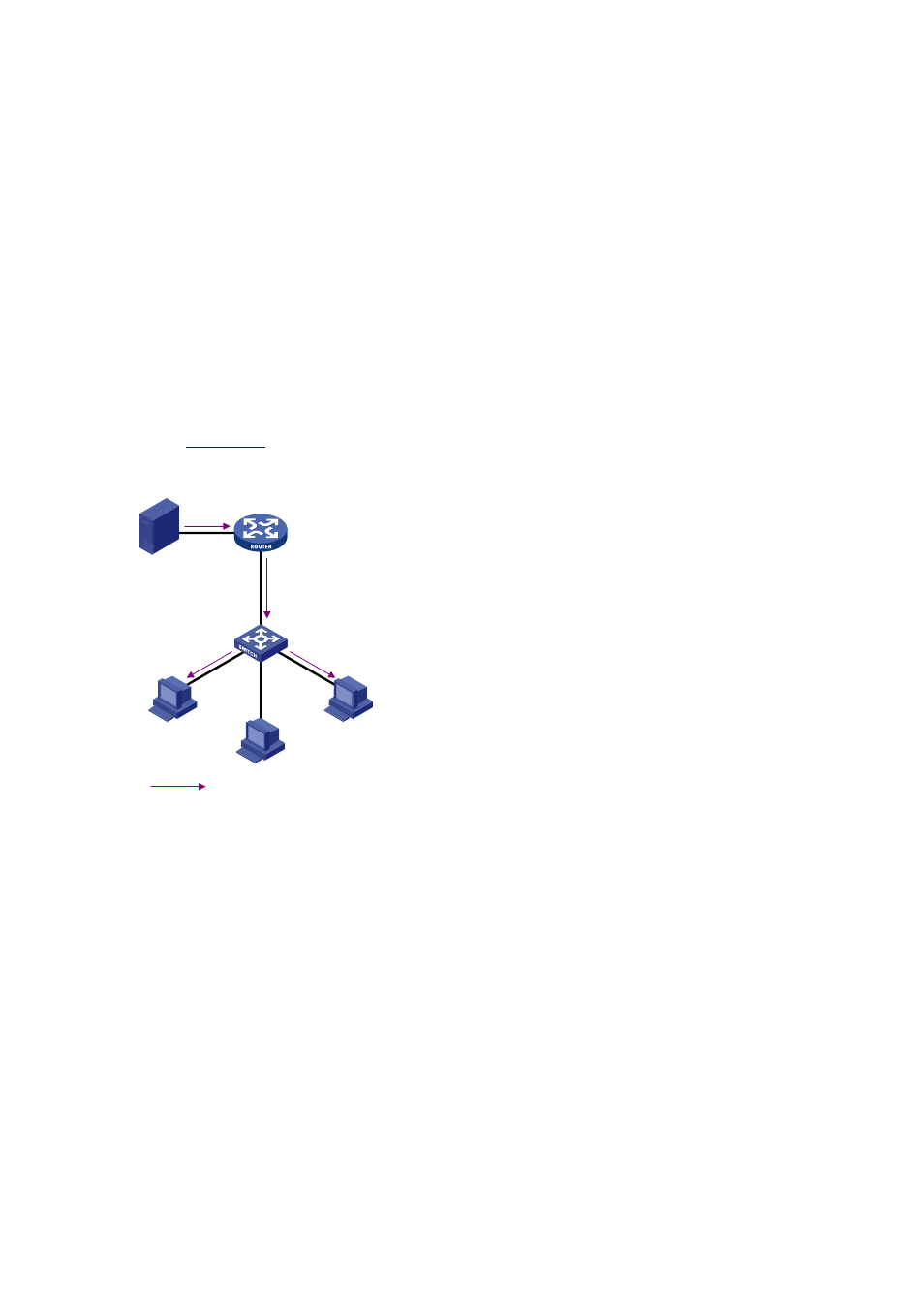Layer 2 multicast protocols – H3C Technologies H3C WX6000 Series Access Controllers User Manual
Page 317

28-11
In the ASM model, multicast routes come in intra-domain routes and inter-domain routes.
z
An intra-domain multicast routing protocol is used to discover multicast sources and build multicast
distribution trees within an AS so as to deliver multicast data to receivers. Among a variety of
mature intra-domain multicast routing protocols, protocol independent multicast (PIM) is a popular
one. Based on the forwarding mechanism, PIM comes in two modes – dense mode (often referred
to as PIM-DM) and sparse mode (often referred to as PIM-SM).
z
An inter-domain multicast routing protocol is used for delivery of multicast information between two
ASs. So far, mature solutions include multicast source discovery protocol (MSDP).
For the SSM model, multicast routes are not divided into inter-domain routes and intra-domain routes.
Since receivers know the position of the multicast source, channels established through PIM-SM are
sufficient for multicast information transport.
Layer 2 multicast protocols
Layer 2 multicast protocols include IGMP Snooping/MLD Snooping and multicast VLAN/IPv6 multicast
VLAN.
shows where these protocols are in the network.
Figure 28-8
Position of Layer 2 multicast protocols
Source
Receiver
Receiver
IPv4/IPv6 multicast packets
IGMP Snooping
/MLD Snooping
Multicast VLAN
/IPv6 Multicast VLAN
1) IGMP Snooping/MLD Snooping
Running on Layer 2 devices, Internet Group Management Protocol Snooping (IGMP Snooping) and
Multicast Listener Discovery Snooping (MLD Snooping) are multicast constraining mechanisms that
manage and control multicast groups by listening to and analyzing IGMP or MLD messages exchanged
between the hosts and Layer 3 multicast devices, thus effectively controlling the flooding of multicast
data in a Layer 2 network.
2) Multicast
VLAN/IPv6 multicast VLAN
In the traditional multicast-on-demand mode, when users in different VLANs on a Layer 2 device need
multicast information, the upstream Layer 3 device needs to forward a separate copy of the multicast
data to each VLAN of the Layer 2 device. With the multicast VLAN or IPv6 multicast VLAN feature
enabled on the Layer 2 device, the Layer 3 multicast device needs to send only one copy of multicast to
the multicast VLAN or IPv6 multicast VLAN on the Layer 2 device. This avoids waste of network
bandwidth and extra burden on the Layer 3 device.